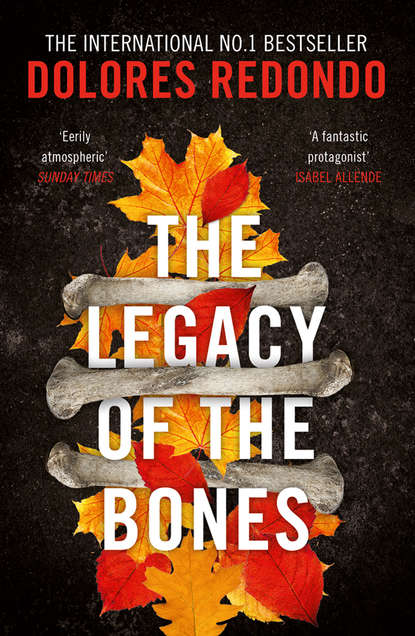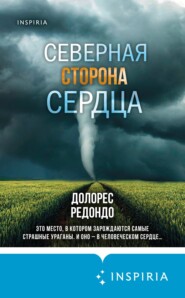По всем вопросам обращайтесь на: info@litportal.ru
(©) 2003-2024.
✖
The Legacy of the Bones
Автор
Год написания книги
2019
Настройки чтения
Размер шрифта
Высота строк
Поля
‘Good morning, everyone. As I’m sure you’ve already gathered, the aim of this meeting is to establish a plan of action for investigating the desecrations that have been taking place at the church in Arizkun. The results of preliminary tests carried out on the bones show they belong to a human infant of less than a year old, but otherwise don’t shed much light on the matter. Dr San Martín will keep us informed of his progress as and when further results come in, but in the meantime I want to begin by looking at what constitutes an act of desecration and why this particular case falls unmistakably into that category …’ She got to her feet and walked over behind Deputy Inspector Etxaide.
‘Desecration is the act of depriving something of its sacred character, despoiling and treating with contempt objects that should be respected. Based on this premise, and bearing in mind these acts were perpetrated in a place of worship and involved the use of human remains, we would seem to be dealing with an act of desecration. However, before deciding how we take the case forward, there are a few things worth clarifying. As with every type of criminal behaviour, desecration takes many forms. Understanding the mechanics of desecration will give us a profile of the sort of person we’re looking for.
‘The most common type of desecration is vandalistic in nature, generally associated with urban gangs and marginal groups, who express their hatred of society by attacking its sacred and religious symbols. They might choose to attack a monument or a library, to burn a flag or smash the windows of a large department store. This type of desecration is the easiest to identify, because it shows clear signs of irrational violence.
‘The second type concerns people who desecrate churches and cemeteries, gangs or groups of criminals whose sole aim is to steal valuable objects, to strip the church of microphones, sound or lighting equipment, anything made of silver or gold, tabernacles, candlesticks, chalices, even gravediggers’ tools. In the most heinous cases, they may steal jewellery or even gold teeth from corpses. Recently, a gang was arrested for stealing the platinum frames from the photographs of the deceased that adorn many graves. Some of these delinquents admit to staging their crimes to look like satanic rituals in order to throw the police off the scent, directing the blame at sects and spreading fear among the locals. In such cases, it’s important not to be duped, to remember that satanists aren’t usually interested in pocketing a priest’s mobile phone. And this brings us to the third type of desecration, the esoteric kind. Jonan …’
Jonan stood up and walked over to the whiteboard.
‘These are magic rituals that derive from various cultures. The majority of these so-called desecrations are in fact religious rituals used in santería, Haitian voodoo, Brazilian candomblé or the Cuban palo mayombé,’ he said, writing the words on the whiteboard.
‘These rituals are associated with death and spiritism and are habitually performed in cemeteries rather than in churches and temples. Only satanists choose places of Christian worship, because besides being devil-worshippers, their aim is to offend God. Satanic desecrations are rare, although at yesterday’s meeting with the Archbishop it was suggested that such acts are often hushed up in order to deter copycat crimes. Most frequently we find sacred symbols being soiled with faeces, vomit, urine, animal blood, and ashes, with the aim of creating a spectacle: decapitated saints, virgins with phallic symbols scrawled on them, inverted crucifixes, that kind of thing. A few years ago, a group of satanists broke down the door of a tiny chapel at A Lanzada in Galicia with an axe. They chopped the hands off a statue of the Virgin that was much revered in the region and tossed them over a cliff. This is a typical example of the theatrical gesture: they could have simply forced open the door, which was sturdy but had an ancient lock and no alarm; they could have taken away the whole statue, but what they did was much more spectacular and offensive.’
Amaia took the floor again.
‘Lastly we have desecration as social protest, or so the perpetrators claim. I had the opportunity to study this type of behaviour close up while working alongside the FBI in the United States. This consists of vandalising graves, digging up bodies of specific people and performing amputations and mutilations, the sole aim of which is to shock. Individuals who perform such acts harbour strong feelings of hatred towards society, and profilers consider them extremely dangerous, because desecration is simply a starting point for their actions, which may go on to target living people. A well-known case occurred when a police officer was killed in an explosion during a raid on a safe house in Leganés where terrorists were hiding out after the 11-M atrocity in Madrid. After the funeral, a group dug up his body, mutilated it and then set it alight. It is worth pointing out that in the Muslim faith, fire signifies the total annihilation of the dead person’s soul, making their resurrection to eternal life impossible.
‘Studies of criminal behaviour consider this type of conduct as a stage of psychopathy. Subjects often have a history of torturing animals, arson, bed-wetting, extreme backwardness at school, abuse … There is often a significant psychosexual element, because of the difficulties they have in relating normally to the opposite sex.
‘To begin with, I must admit that I favoured the vandalistic theory – and I haven’t entirely ruled it out. However, there are aspects of the history of Arizkun – for those of you unfamiliar with it, Jonan has prepared a report explaining the possible historical motive – which mean we can’t dismiss the possibility that these attacks are a form of social protest, albeit in an embryonic phase.
‘Another kind of desecration which we have ruled out is art theft. Perpetrators enter a church they have previously identified, causing minimum damage, and remove only the most valuable objects. These people are usually working for someone else, are never opportunistic or disorganised.’
‘Good,’ the Commissioner chimed in. ‘Now, tell me what you’ve done so far?’
Iriarte opened his notebook and read out loud:
‘For the moment we have a round-the-clock patrol car outside the church; that seems to have gone some way towards reassuring the locals; a few of them have been over to thank the officers. No further incidents have taken place.’
‘Have you questioned people living in the immediate vicinity?’ asked Amaia.
‘Yes, but, even though Arizkun is quiet as the grave at night, no one saw or heard anything. Chopping up the pew with an axe must have made quite a din.’
‘That church has solid walls, which would have muffled the blows, not to mention the walls of the houses themselves. And on a cold winter night, people’s doors and windows would have been firmly shut.’
Iriarte nodded. ‘We’ve also looked into local teenage gangs with antisocial tendencies, but drawn a blank. On the whole, young people in Arizkun are pretty laid-back, a bit nationalistic, but that’s about it. The majority, practising or not, see the church as a symbol of the village.’
‘What about the issue of the agotes?’ asked Amaia.
Iriarte sighed. ‘That’s an extremely sensitive subject, chief. And one most people in Arizkun prefer not to talk about. I can assure you that, until recently, an outsider coming to Arizkun asking about them would encounter an impenetrable wall of silence.’
‘There are a couple of odd stories about that,’ Zabalza chimed in. ‘I heard that some years ago, a well-known author arrived in Arizkun intending to write about the agotes, but was forced to abandon his project, because everyone he asked played dumb, or pretended they’d never heard of them. They all assured him the agotes were a myth and no one believed they had really existed. Apparently the novelist Camilo José Cela was interested in them too, and was given the same treatment.’
‘Those are my people you’re talking about,’ said Amaia, smiling. ‘Things must be different among the younger generation. They’re usually proud of their roots, but don’t feel the guilt the older generations carry around. As I was saying to Jonan yesterday, the story of the agotes is similar to that of the Jews or Muslims in Spain; people were treated differently because of their religion, gender, ancestry, wealth: the same as now, more or less … Even noblewomen were forced to marry or confined in convents.’
‘You’re probably right. For most young people, anything that happened before the civil war is prehistoric. Nevertheless, we need to avoid treading on people’s toes.’
‘We will,’ Amaia assured him. ‘This afternoon I’m heading off to Elizondo for a few days to take charge of the investigation.’
The Commissioner nodded, so she went on:
‘Jonan is going to look at anti-Catholic action groups and everything relating to the agotes, as well as the desecrated objects. I’d like someone to arrange for me to meet separately with the parish priest and the chaplain at Arizkun: we can’t rule out the possibility that this is an act of revenge against one of them. Don’t forget the recent theft of the Codex Calixtinus, which turned out to be part of a personal vendetta against the dean of Santiago Cathedral by a former employee. In other words, before we start developing any historical or mystical theories, we should do a bit of digging on the people involved, as we would with any other case. I have a few ideas I want to follow up. That’s all for now,’ she said, rising and following the Commissioner out of the room. ‘See you there tomorrow morning.’
The report, which had kept her awake until three in the morning, was lying on the Commissioner’s desk. She examined the cover for any sign that he had read it.
‘Sir, have you had a chance to look at my report?’
The Commissioner turned and gazed at her pensively for a few moments before responding.
‘Yes, I have, Salazar. It’s exhaustive.’
Amaia scanned his inscrutable face, wondering whether for him exhaustive was a good or a bad thing.
After a brief silence, to her astonishment he added:
‘Exhaustive and extremely interesting. I can understand why all this caught your attention. I can also see why Lieutenant Padua might consider it merits further investigation, but I agree with his superiors. If you’d brought me this report a week ago, I would have told you exactly what they told him. The similarities are somewhat far-fetched and could be a coincidence. The fact that prisoners communicate amongst themselves or with people who admire their crimes is commoner than people think.’
He broke off and sat down facing her.
‘Of course, yesterday’s events cast a different light on things. Quiralte directly involved you by deciding to tell you where the body was. I’ve given it a lot of thought, but I’m still not sure. These cases are all officially closed. The killers are all dead, by their own hand. Separate cases, in different provinces, run by different forces, and you’re asking me to open an investigation.’
Amaia remained silent, holding his gaze.
‘I have faith in you, Salazar, I trust your instinct. I know there must be something there to have aroused your interest. However, I don’t consider there’s enough evidence to authorise opening an official investigation, which would only stir up rivalries between the different forces.’
He fell silent, while Amaia held her breath.
‘Unless there’s something else you aren’t telling me …’
Amaia smiled. Not for nothing was he commissioner. She slipped the plastic sheath out of her pocket and handed it to him.
‘Jasón Medina was carrying this envelope the day he killed himself in the courthouse toilets.’
He took it from her, examining the contents through the plastic. ‘It’s addressed to you,’ he said, surprised. He opened his desk drawer, searching for gloves.
‘You can touch it, it’s been tested for fingerprints – they didn’t find a single one.’
The Commissioner took the envelope out of the plastic sheath and read the card inside before looking up at Amaia.
‘All right,’ he said. ‘I’m authorising an investigation based on the fact that the two murderers addressed themselves exclusively to you.’
Amaia nodded.
‘Do your best not to tread on any toes – and before you proceed you’ll need to secure Markina’s blessing, although I doubt he’ll be a problem. He seems to have the greatest respect for you as a detective. Why, only this morning he called to discuss the Aguirre case and was singing your praises. I don’t want any run-ins with the other forces, so I’m asking you to be polite and treat them with kid gloves.’ He paused for effect. ‘And in return, I expect to see some progress on the desecrations at Arizkun.’
Amaia pulled a weary face.
‘I know your thoughts on the matter, but it’s imperative we solve the case as soon as possible. The Mayor was on the phone earlier. He sounded extremely concerned.’











